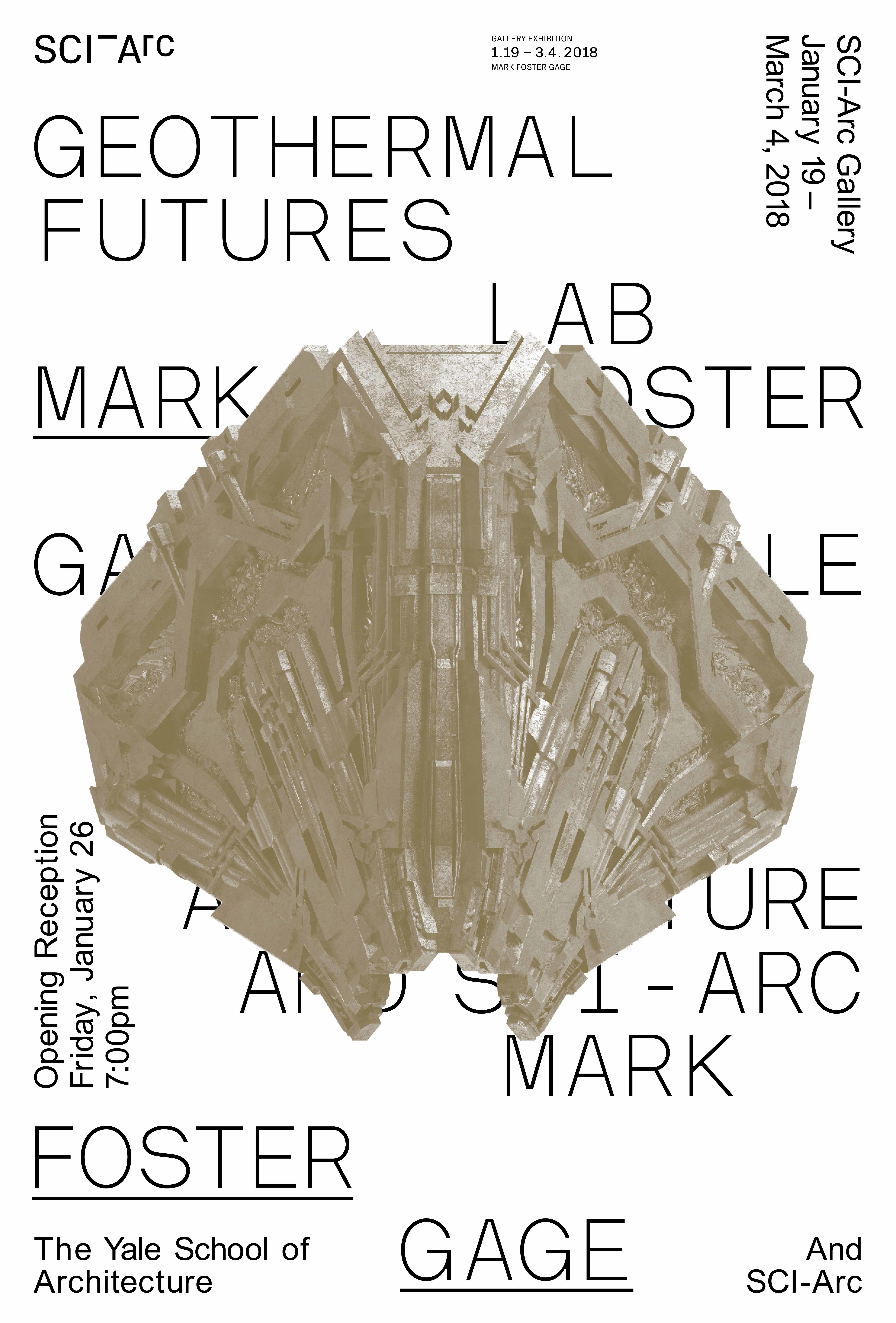Lecture with Mark Foster Gage: Friday, January 26 at 6pm
Opening Reception: Friday, January 26 at 7pm
Lecture with Mark Foster Gage: Friday, January 26 at 6pm
Opening Reception: Friday, January 26 at 7pm
The Yale University School of Architecture and the Southern California Institute of Architecture are pleased to announce the opening of the public-access joint Geothermal Futures Lab demonstration in Los Angeles California. The laboratory researches the use of laser ablation geothermal resonance technologies that are capable of generating up to nineteen times more power than existing geothermal energy extraction techniques. Visitors can observe this prototype laser extraction process live as it showcases a method through which it will be possible to increase California’s reliance on sustainable geothermal sources of power from its existing state of 6% today to 68% by 2022. Using the laser ablation geothermal resonance techniques, an array of ten para-frictional mechanisms along the San Andreas fault already functions to extract, daily, a total 2 million kilowatt-hours of sustainable geothermal power each day which currently powers the greater downtown Los Angeles area.
The exhibited technology capitalizes on the unique tungsten-saturated substrate of the San Andres fault through the use of a visible-light Q-switched Nd:YAG lasers, tuned to extract sustainable magno-electrical energy from a +678 degree Kelvin supercritical water deposits located adjacent to a stable magma chamber 4.4km beneath the Earths surface. This supercritical water, that behaves both as liquid and gas, is vaporized through 3,780 Kelvin bursts which at peak power induce a supercritical matter state releasing energy in exponential excess of its matter equivalent. The presence of heterogeneous frequency fields in metal deposits along the strike-slipping continental plates supercharges the pockets of supercritical water with magnetic nuons which are forced upwards with velocity µ as a result of the pressure gradient along the vertical faults. Due to the variable decay rate of metals in the presence of such high trajectory nuons, the prototype laser resonance mechanism itself is encased in an experimental phenolic cured resin foam (Cas no. 000050-00-0 with a normal specific gravity of 120 kg/m3) which insulates the process from outside magnetic interference. For rapid nuon decay protection the foam resin is additionally coated with the same seven µm micrometer nano-gold foil used to encase existing NASA satellites. This thick film of gold nano-molecules particles gives the machine its striking gold aesthetic appearance.†
† None of the above scientific information is true, although the exhibition and collaboration are real. Please visit us at the SCI_Arc gallery to learn more and see the non-functioning, but incredible giant gold prototype machine and its associated components. For additional information visit the gallery in person or learn more about this para-fictional project at: www.magneticfuturescom. This is an architectural public service announcement to be more aware of your reality and develop a healthier skepticism for information presented without proper journalistic or scientific verification, especially from architects.
LEAD RESEARCHER
Mark Foster Gage is an architect and Assistant Dean of the Yale School of Architecture. His innovative research projects have been exhibited internationally in scientific and popular locations including the Museum of Modern Art, the Museum of the Art Institute of Chicago, and the Venice, Rotterdam, and Beijing Biennales as well as having been featured in press outlets including Newsweek, Surface, Wired, the New York Times, Fast Company, and on FOX News and PBS.
